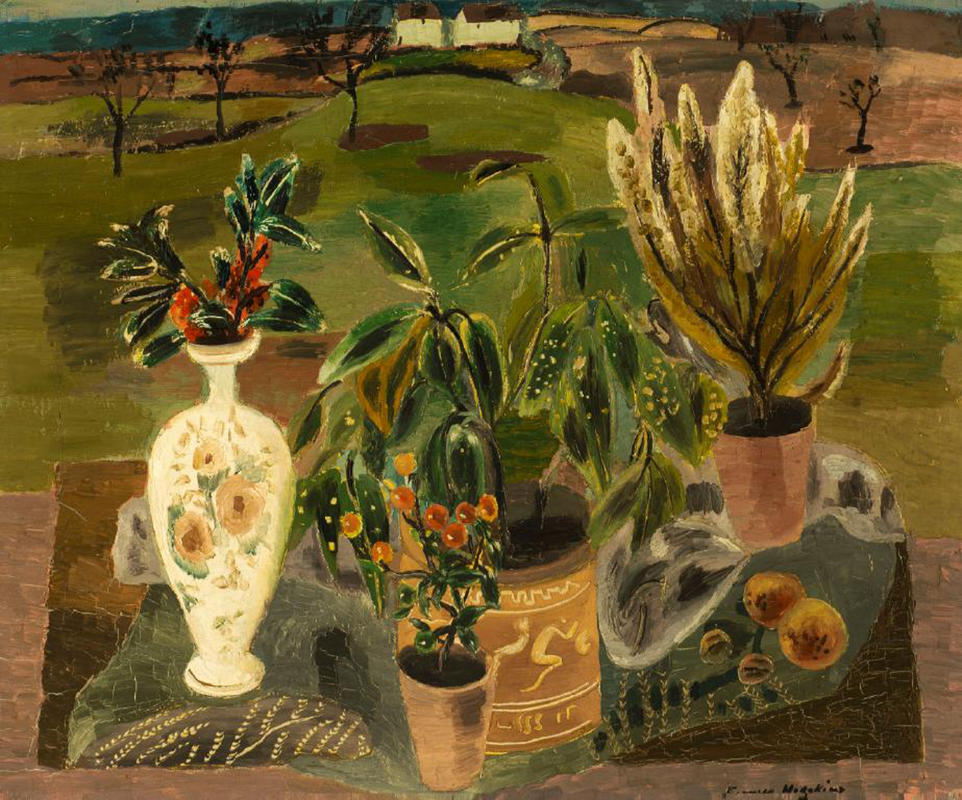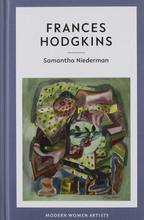More about Berries and Laurel
- All
- Info
- Shop

Contributor
Less the romantic, Frances Hodgkins once referred to English scenery as “unsympathetic and difficult.”
So what did she do? She put some still life in it! Hodgkins was known for mixing landscape and still life in her work, inspired partly by artists such as Picasso and Matisse. What makes this particular painting stand out so much is the contrast between the two genres—here, because we get an outdoorsy background, the plants and their vases look gigantic. This differs wildly from how regular still life—a bowl of fruit, flowers in a vase, literally just jars and blocks—is often presented.
Some of Hodgkins’s favorite subjects and locations for her paintings included boats, marketplaces, and anywhere with bright, reflective light. Unfortunately, she resided most often in England, where there always seems to be bad weather, so paintings like Berries and Laurel are somewhat of a triumph in spite all that drab grey and brown that she was so frequently forced to work with.
This painting was Hodgkins’s “in” for the highly exclusive Seven and Five Society (started as a group of seven painters and five sculptors), which led the way to her finally getting a contract through the late 1930s to paint, which was the first time in her life she could enjoy a small regular income. Money was notoriously hard to come by for Hodgkins and despite the brief fortune, she would ultimately live in poverty for most of her life.
But it’s not all bad—she would eventually get acknowledgement for her achievements, including her role as a forerunner of British modernism, as well as her resilience against the prejudice she received simply for being a female artist. Of course, none of this would happen while she was alive, but hey, it could be worse, right? She didn’t lose any ears like Van Gogh, so we can be grateful for that.
Sources
- Artist Biographies Editors. “Seven and Five Society.” www.artbiogs.co.uk. Accessed November 20, 2017. http://www.artbiogs.co.uk/2/societies/seven-five-society.
- Auckland Art Gallery Editors. “Frances Hodgkins Berries and Laurel.” www.aucklandartgallery.com. Accessed November 20, 2017. https://www.aucklandartgallery.com/explore-art-and-ideas/artwork/5754/b….
- Jackson, Penelope. “Frances Hodgkins, an extraordinary painter.” www.artgallery.org.nz. Accessed November 20, 2017. https://www.artgallery.org.nz/femme-du-monde-frances-hodgkins.
- McLintock, A. H.. “HODGKINS, Frances.” www.teara.govt.nz. Accessed November 20, 2017. https://teara.govt.nz/en/1966/hodgkins-frances.












